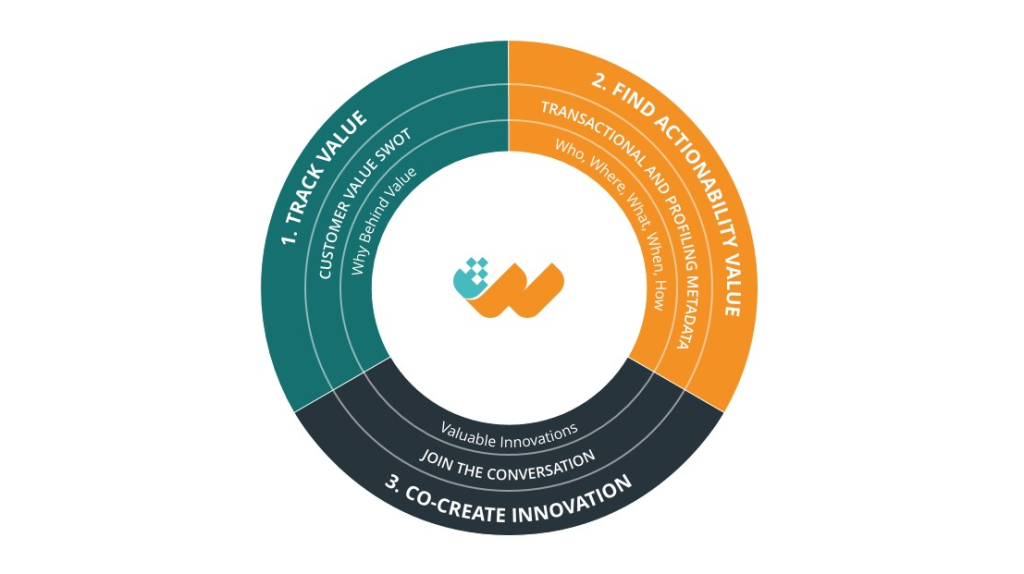Applying the widely-used Marketing Mix (AKA the 5 Ps of Marketing) concept to Customer Value Alignment (CVA) can give you a great structure for framing company-wide strategy, not just your marketing team.
*For a detailed explanation of Customer Value Alignment, read this article.
What are Customer Value Alignment and the 5 Ps, and how do we put them together?
Customer Value is a measure of the trade-off between benefits and costs perceived by the customer when considering a supplier’s offering and market alternatives.
It’s the ultimate factor behind customers’ decisions of expenditure and loyalty to any business. Different customer profiles value different things.
Some are more sensitive to benefit trade-offs, others to costs, and others to the relative comparison with alternatives in the market.
Customer Value Alignment (CVA) is the process of closing the gap between what a business offers, and the perceived value customers expect from that business.
Now, let’s look at the Marketing Mix. You can think of the 5 Ps (Product/Service, Price, Place, Promotion, and People) as levers you can pull to bring your practices in line with expected Customer Value.
- Product/Service – What is the good/service being sold?
- Price – What is the set price of the good/service? What are the pricing strategies, discounts, and sales systems in place?
- Place – Where does a buyer have to go to get the good/service? Is the storefront physical or digital?
- Promotion – How is the good/service being promoted? Online advertising, signage, events, trade shows, etc.?
- People – Who is selling the good/service? Are they a good representative of the product and/or customer?
It’s crucial to understand when and why to pull each of these levers.
The goal of Customer Value Alignment is to find out the exact moments and features where your business practices line up with your customers’ perception of value, and how to close any gaps that exist.
This is where we start using the Customer Value Alignment Cycle. Within the Cycle, the 5 Ps are used as individual categories of customer value.

- Track customer value perceptions: Through conversations, we can learn the nuances behind your target market’s needs, wants, values, and pains.
From there, we can focus especially on features or moments in the customer journey with a high impact on the customers’ decision to buy, stay loyal, or churn.
These are the perceptions that will create the highest potential value for both the customer and your company. - Find actionable insights within the Marketing Mix: Use the 5 Ps of the Marketing Mix to design a product or service around your target market’s desired value. These levers are always available to pull, but it’s important to know when and why to pull them. Pulling the wrong one at the wrong time can be disastrous, especially on larger scales.
- Test ideas with customers before diving in: Before you commit resources to a costly launch, you can co-create the solution alongside customers to ensure you get it right the first time.
- Evaluate and repeat: Continuously monitor the effectiveness of your strategy and adjust as necessary. Tracking should be ongoing because customer preferences, expectations, and external factors beyond your control never stop changing.
The real value of the Marketing Mix is twofold: One, it’s an easy way to visualize the gaps in customers’ perceptions of what you deliver. Once you can clearly see where gaps in value exist, it becomes simple to design targeted strategies and fixes around them.
And two is that despite being called the “Marketing” Mix, this framework can help design strategies throughout an organization, all the way up to the CEO.
With the insights available from Customer Value Alignment, the 5 Ps can be applied to every level of the company.
These are just a few examples of how the Marketing Mix can help various teams:
Product – R&D can directly track and implement features and improvements suggested by customers, Quality Assurance can identify issues that get past them and improve future quality checks.
Price – Finance can adjust KPIs, sales numbers, and budgeting around customers’ perceptions, as well as any changes that need to be made as a result.
Promotion – Marketing can see how best to advertise to specific segments and locations, as well as how customers identify with the brand so they can adjust their messaging. They can map places where their specific customers are more likely to respond to their advertising.
People – HR can adjust their recruitment and training practices to bring service personnel in line with customer perceptions and expectations, so they deliver the right experiences.
Place – Operations, store managers, and ecommerce directors can decide where best to physically place their products in their stores or on websites to reach their most valuable audience, and adjust accordingly.
With Customer Value Alignment and the Marketing Mix, you can create company-wide strategies at the C-level. Then you can bring your whole organization together around shared knowledge of true Customer Value, all at once.





